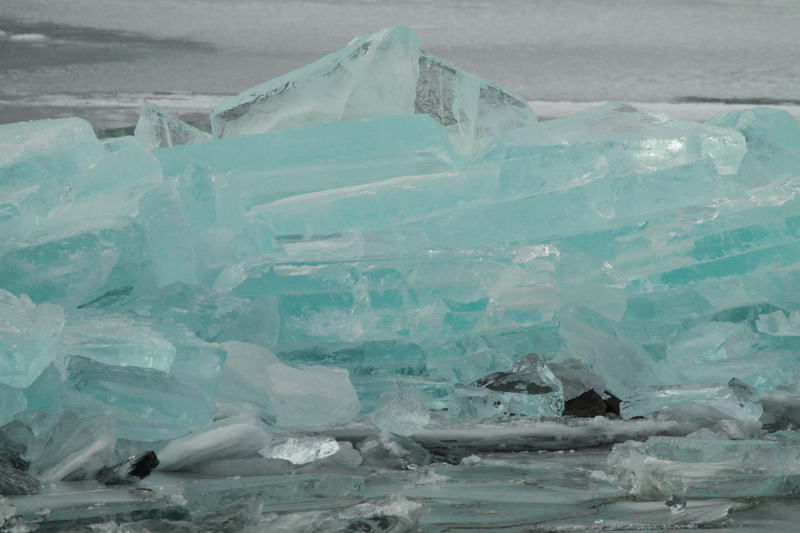
Ice Color
Pure ice and water are pale blue in color as a result of a unique form of molecular resonance of OH bonds and its high density of those bonds. Water and ice absorb much more red-orange-yellow light than blue leaving the transmitted color blue. It is most visible in clear ice seen on edge so several feet of ice are in the optical path. more
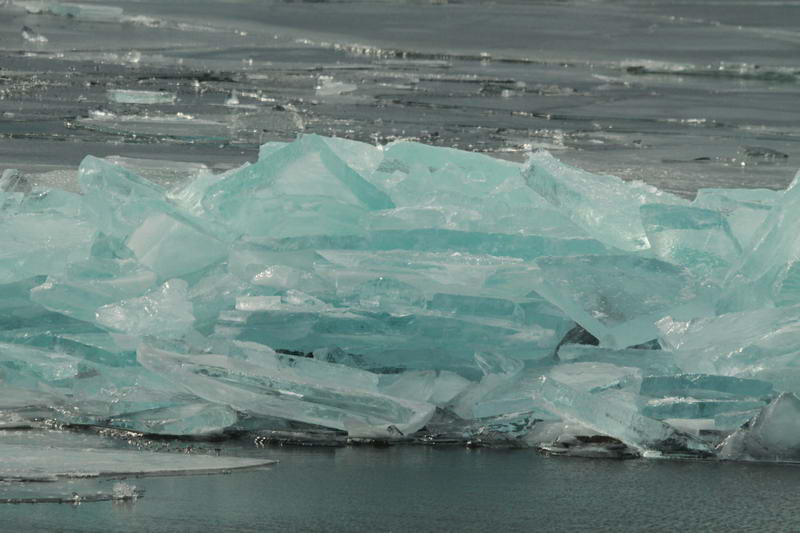
The ice in this picture is about 6" thick and was piled up on a breakwater at the Grand Isle Vt ferry landing. The ice is very clear as it is congealation ice (water ice) and has not been through any thaw cycles yet. Warm weather tends to create vapor figures and bubbles in and between the crystals which scatter the light transmitted through the ice. The picture was taken on a hazy, mostly cloudy day. The picture was not adjusted to enhance the color beyond what the camera did on its own (ev=0, White balance=cloudy).
Lake and pond ice shows colors that that tend toward green. Brown water (wetlands) makes yellowish or brownish ice. Cyanobacteria can make bright blue ice in reflected light. More on Cyanobacteria and ice
Lake Champlain water is green.
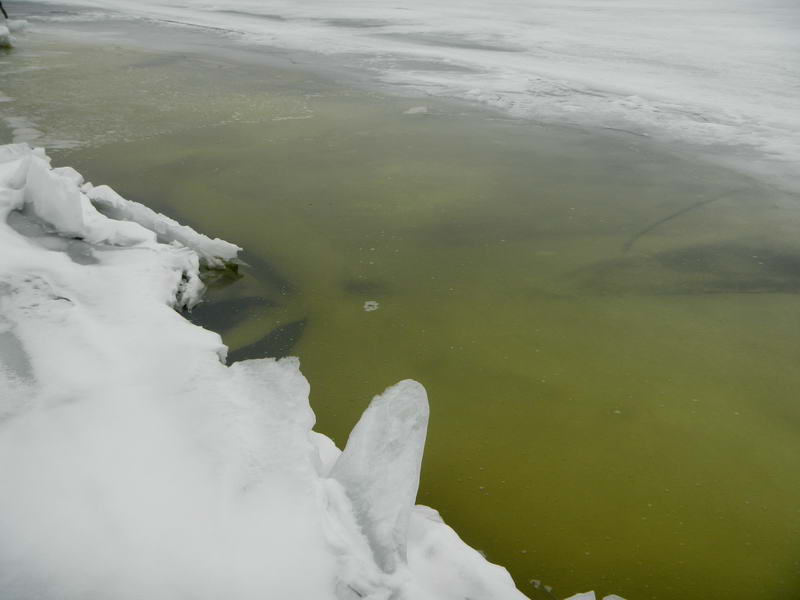 The water here is roughly 5 feet deep over white ice in northeastern Lake Champlain where it is fairly shallow and weed infested.
The water here is roughly 5 feet deep over white ice in northeastern Lake Champlain where it is fairly shallow and weed infested.
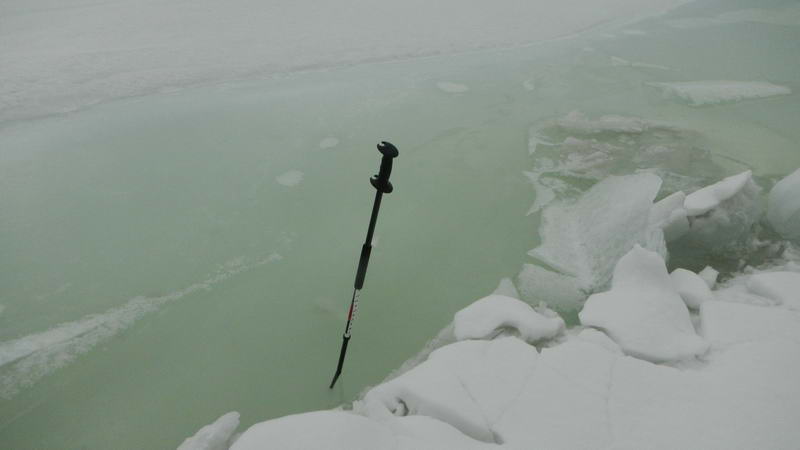
About 1.5 feet of water in a much deeper part of Lake Champlain.
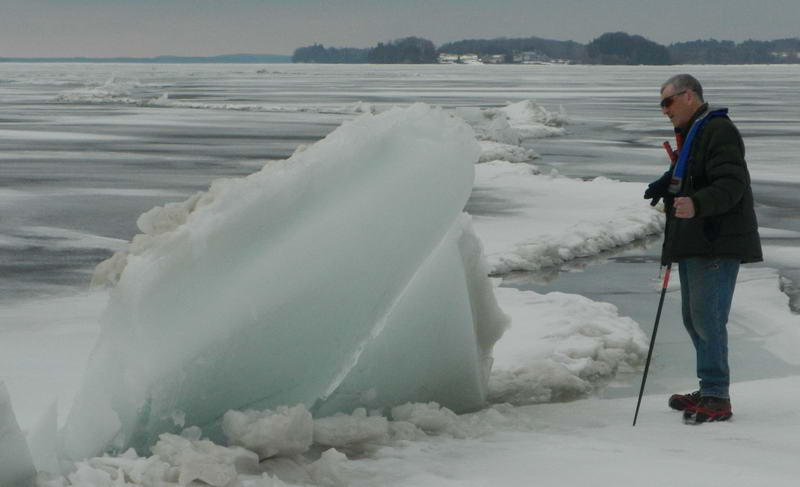
This ice formed near the previous picture. This piece has thawed enough to loose much of its clairity and the intensity of its color.
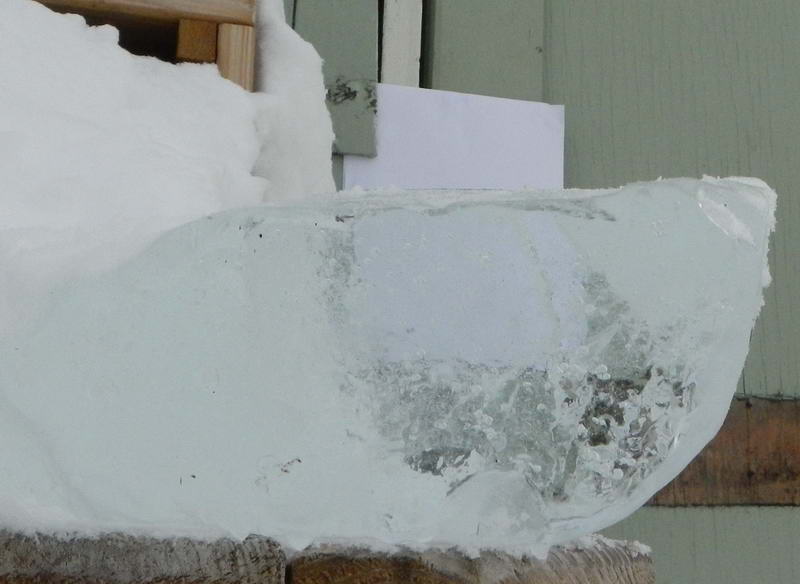 Looking through 13" of the 'deep water' ice at a sheet of white paper. It has some cloudiness and bubbles in the light path. At this thickness, the paper through the ice looks only slightly more blue.
Looking through 13" of the 'deep water' ice at a sheet of white paper. It has some cloudiness and bubbles in the light path. At this thickness, the paper through the ice looks only slightly more blue.
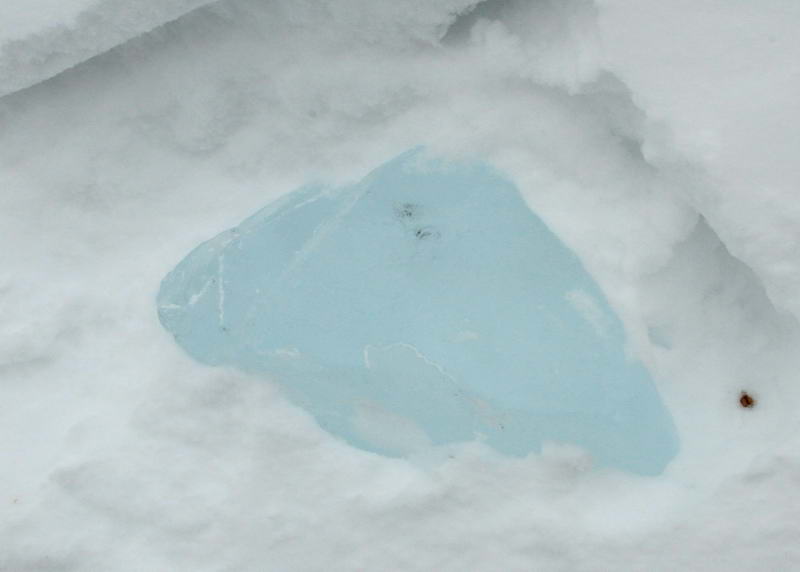 The same piece of ice planted in a snow drift. Diffuse blue snow in the snow appears to dump a lot of blue color into the ice. The snow is free of green plant pigments so this blue is likely to be representative of the color of pure ice with a longer ice path than 13". There may be other factors at play like scattering effects in the snow.
The same piece of ice planted in a snow drift. Diffuse blue snow in the snow appears to dump a lot of blue color into the ice. The snow is free of green plant pigments so this blue is likely to be representative of the color of pure ice with a longer ice path than 13". There may be other factors at play like scattering effects in the snow.
This suggests two things: 1) The strength of the color in the ferry breakwater slabs shown above is made stronger by the clarity of the ice, width of the slabs and internal reflection steering light toward the edges. 2) Its greener tint is probably from plant pigments combined with the natural ice color.
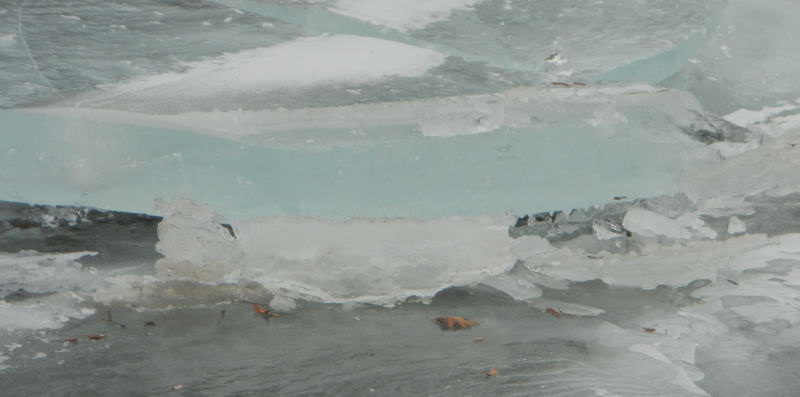 7" ice slab beached in Peru NY.
7" ice slab beached in Peru NY.
The following two pictures looking through 10 feet of water in a 1-1/4" plastic electrical conduit.
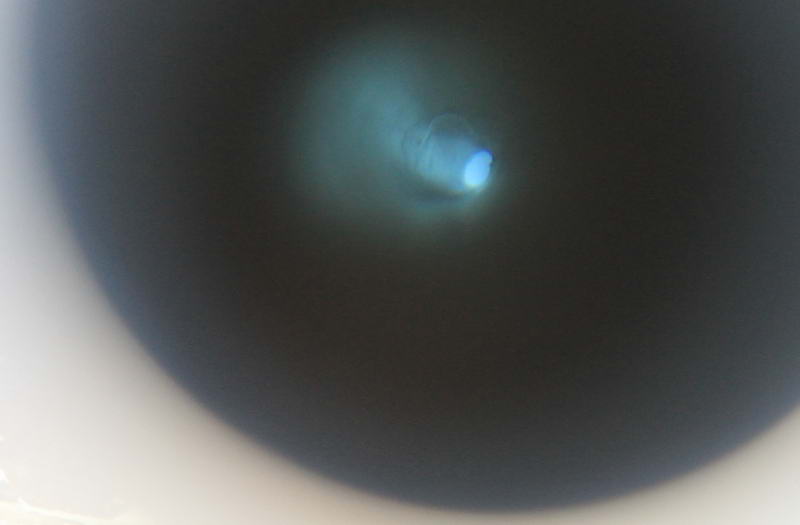 Distilled water in the 10 foot pipe (the pipe has a little bend over its length). The underlying white target is a white ceramic floor tile that does not appear to have optical brighteners like some paper has.
Distilled water in the 10 foot pipe (the pipe has a little bend over its length). The underlying white target is a white ceramic floor tile that does not appear to have optical brighteners like some paper has.
 This is looking through 10 feet of lake water from under the ice in Burlington harbor. The target is the same white tile.
This is looking through 10 feet of lake water from under the ice in Burlington harbor. The target is the same white tile.
Bob 3/14/14
